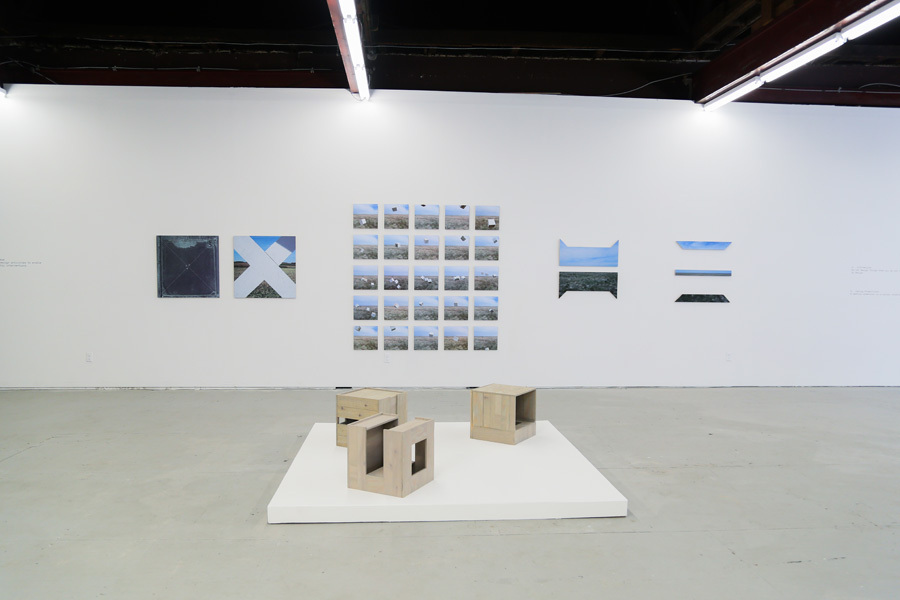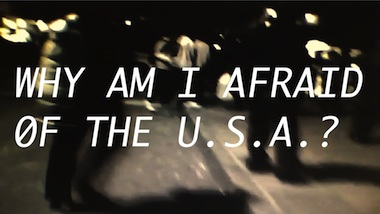Curatorial Projects
Counterpublic is a civic exhibition that weaves contemporary art into the life of St. Louis for three months every three years in order to reimagine civic infrastructures toward generational change. Counterpublic’s second edition will run from April 15 to July 15, 2023.
Counterpublic 2023 engages the complex histories, charged present, and many possible futures of St. Louis from April 15 to July 15, 2023. Counterpublic 2023 brings together thirty leading and emergent artists, architects, collectives, and community organizers to reimagine civic infrastructures toward generational change.
Following a year-long process of community engagement in which over 800 neighbors in St. Louis were invited to reflect upon the most urgent needs facing their communities in order to shape the theme of the exhibition, Counterpublic determined to focus its 2023 edition on public memory and reparative futures—how our history is told, held, and healed, and how our future is envisioned collectively toward new liberated lifeways. I served as Artistic Director along with associate curator Katherine Simone Reynolds and a curatorial ensemble including Allison Glenn, Diya Vij, Risa Puleo and New Red Order.
Aaron Fowler: N2EXISTENCE
Following the onset of the pandemic, in March 2020 The Luminary elected to transform its entire space for a full year to a single artist, acclaimed St. Louis-born painter Aaron Fowler, to transform the gallery into an immersive studio, create a storefront residency for his community, and a series of public projects around the city. Slowing down the tempo of the exhibition cycle and investing in a single artist to create career-defining work, the project was an excercise in reimagining the pace and purpose of the independent space during the slowdown. Curated with Katherine Simóne Reynolds.
America’s Mythic Time
In collaboration with civil rights law firm ArchCity Defenders, The Luminary presents America’s Mythic Time, an exhibition focused on the devastating impacts of racial profiling, police brutality, and mass incarceration on the poor and communities of color, as well as forms of resistance and liberation both through the legal system and within community organizing and artists’ efforts. The exhibition particularly explores carceral capitalism as seen in the steady expansion of for-profit prisons, cash bail, modern day debtors’ prisons, and workhouse jails with health-destroying conditions in St. Louis and nationwide. Referencing Hortense Spillers’s notion of “mythic time” - a seizing of both time and bodies that sanctions continued exclusion and violence - the exhibition presses the ways in which over-policing and incarceration devastate communities of color, but also poses that forms of liberation originate within these communities.
America’s Mythic Time, curated by James McAnally with Katherine Simóne Reynolds, brings together significant works from American Artist, Maria Gaspar, Kahlil Robert Irving, Jordan Weber, WORK/PLAY and ephemera from a range of St. Louis-based activists and organizers including Close the Workhouse and The Bail Project, among others.
Counterpublic was a triennial exhibition scaled to a neighborhood curated by Katherine Simone Reynolds, Brea Youngblood and I in 2019 at The Luminary. Counterpublic 2019 centered on a series of twenty-four site-responsive commissions in venues as divergent as a tea shop, punk club, former sanctuary, Buddhist temple, Mexican panaderia, and community-organized park and basketball court.
Works ranged from architectural interventions to archival community-led sessions, meal-based gatherings to dramatic public processions. Spanning three months from April 13th to July 13th, 2019 the project was a layered, nuanced neighborhood-based platform that engaged the complex community organizing, conflicted politics, radical openings, and distressing developments that intertwine within Cherokee Street and its surrounding neighborhoods. Together, Counterpublic intended to advance new contexts of liberation, care, complexity, and dissent into the everyday spaces of a neighborhood through responsive commissions and intentional intersections among the many publics and counterpublics of this place.
An atlas of localized resistance
Organized for SMFA/Tufts, An atlas of localized resistance documented art’s intersections with the Ferguson uprising and the collective strategies transforming St. Louis in the ensuing years.
Freedom in a Platform
Freedom in a Platform explores the typologies of both exhibition and institution.
Featuring an architectural structure for rest and communal care and a cleaner that chemically cancels itself out, seats cast in birdseed meant to find final form in their unmaking outdoors and a performance that embodies the complex alliances that exist between marginalized communities, Freedom in a Platform opens both an altered physical space and new ways of operating within it. Continuing our Commoning the Institution thematic program, the exhibition extends the process of a commoned institution, an institution-yet-to-come that opens and continues opening. This show likewise opens but doesn’t quite close, operating on overlapping durations, dispersing to other spaces, and occupying the gallery in ever-evolving contexts before leading immediately into the Counterpublic public art platform scaled to our neighborhood.
Freedom in a Platform features work from Sage Dawson, Ohad Meromi, OOIEE, Marina Peng, Sean Raspet, Matt Siegle, and Seth Weiner alongside other gestures and remnants from our previous season, and archives oriented towards the future.

0ppositions
0ppositions was a group exhibition of abstractions and obstructions featuring work from Colleen Asper, Hannah Black, Vaughn Davis, Danny Giles, Jonah Groeneboer, Katherine Reynolds, Slavs and Tatars, and Pedro Velez at The Luminary.

Off-Modern: In What Time Do We Live?
Off Modern: In What Time Do We Live? acts as an atlas pinning together images to make small marks of historical change and cultural recurrence comprehensible. Off-modern follows a non-linear conception of cultural evolution. The “off” in “off-modern” designates both the belonging to the critical project of modernity and its edgy excess. It signifies both intimacy and estrangement, belonging and longing to take off. In the twenty-first century, modernity is our antiquity. We live with its ruins, which we incorporate into our present, leaving deliberate scars or disguising our age marks. The exhibition featured work from Elizabeth Atterbury, Bruce Burton, Laura Ann Davis, Vaughn Davis, Jeff Eaton, Assaf Evron, Tatiana Istomina, Nicholas Mangan, David Whelan, and Steph Zimmerman.

Document V
Document V suggests itself as an exhibition, but also perhaps a collectively-formed curricula, public reading group, or durational performance. Regardless of its official form, it is a historical manifestation of an immaterial process we call a publication. As an anthology of Temporary Art Review, Document V expands past the gallery to include commissioned public performances, web-based interventions, site-specific readings and immaterial actions. Participating artists and projects include: ACRE TV; Colin Alexander; Anxious to Make (Liat Berdugo and Emily Martinez); Mike Calway-Fagen; Steven Cottingham; Paul Druecke; Nihaal Faizal; Good Weather (Haynes Riley presenting Matthew Kerkhof); Sam Gould/Red 76; Gelare Khosgozaran; Jonathan Hanahan; Michael Powell; Museum of Capitalism; Ryder Richards; Signal Fire; Ryan Thayer; Transversal Projects; Christine Wong-Yap; Caroline Woolard and Lika Volkova and others. Curated with Sarrita Hunn.

We, Object (a quarrel in ragtime)
What is an institution as an exhibition: a survey of objects, props and acts? As an institution that proposes art’s social relevance to the pressing issues of our time, when time comes to us, we wonder - what is an art of its time? What is a voice of the people? Which people and where? The institution must become a time, or contain a quarrel within time, a staccato rhythm in history with legacies and futures we don’t yet understand.
We, Object (a quarrel in ragtime) was a part of Alternative Currencies at Vox Populi in Philadelphia, a survey of alternative spaces across the US including KChung!, Possible Press, and Threewalls. Featuring texts, objects, and artists considering the multiple intersections of the institution within current social movements, We, Object (a quarrel in ragtime) aims to embed a simultaneous space of hospitality and protest within the gallery. Curated as US English, with Brea Youngblood.

Speculative Spaces::Working Thesesft. James Bridle, High Desert Test Sites, ifau and Jesko Fezer, Jason Lazarus, M12, Metahaven, Nikolaj Recke and Jesse Vogler.

Late capitalism, it’s like, almost overft. Julie Bena, Jesse Darling, Carson Fisk-Vittori, Mia Goyette and Christopher Thompson.
Formatft. Greg Borenstein and Scott Wayne Indiana, Sterling Crispin, Paul B. Davis and the BEIGE Programming Ensemble (Cory Arcangel, Joe Beuckman, Joseph Bonn and Paul B. Davis), Elna Frederick, Martijn Hendricks, Sara Ludy, Nullsleep, Jon Rafman, Ryder Ripps, and Krist Wood.

How to Disappear
ft. Ben Alper, Mircea Cantor, Cayetano Ferrer, Claire Fontaine, Tatiana Grigorenko, Seth Price, and YOUNG-HAE CHANG HEAVY INDUSTRIES with a screening of Rene Daalder/Bas Jan Ader.